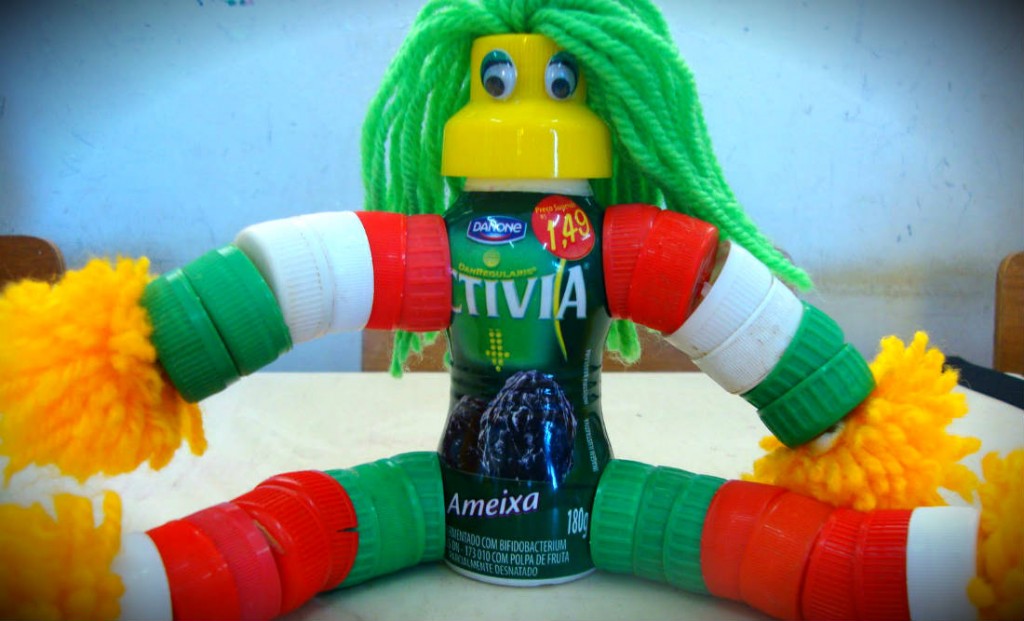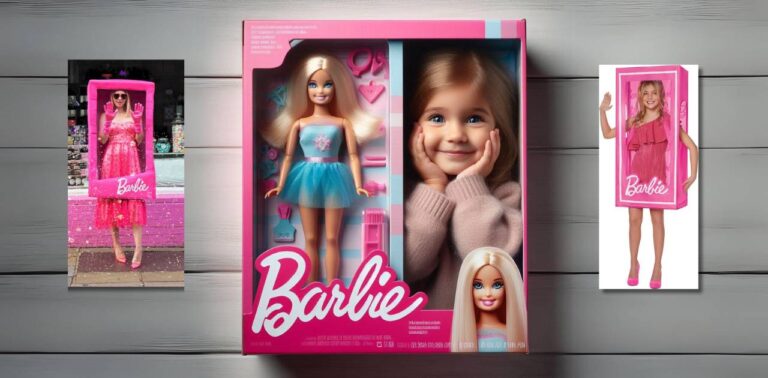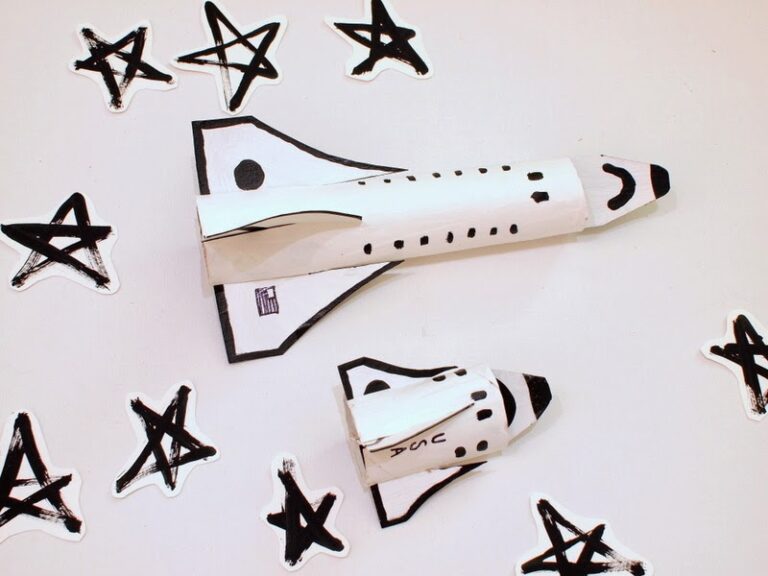Anúncios
Creating toys from disposable packaging is a practice that goes beyond simple fun. By involving children in this process, it is possible to teach important lessons about conscious consumption and sustainability. After all, what we often call trash can actually be transformed into something useful and creative. The concept of “trash” is reevaluated, showing that almost nothing is truly disposable.
In addition to being a fun activity, building toys with recycled materials helps develop motor skills and stimulates children's creativity. They learn to see the potential in everyday objects that would normally be thrown away, contributing to a more sustainable mindset from an early age.

The Simplicity and Joy of Creating
Creating toys from disposable packaging can be a simple but extremely rewarding activity. As the image of a doll made from yogurt pots and toilet paper rolls shows, this practice does not require complex materials or advanced techniques. What is needed, in fact, is a little imagination and a willingness to step out of your comfort zone.
The doll, affectionately nicknamed Rolinho the Clown, is a perfect example of how ordinary items can be given new life in the hands of creative children. With his mischievous expression, Rolinho the Clown looks ready to get up to mischief – a typical and fun character that will make any child smile.
If your son or daughter is into sports, why not create an entire team of recycled dolls? The Recycled Team can be made up of several of these dolls, ready to defend nature and the environment. This activity is not only fun, but it also teaches about the value of recycling and the positive impact we can have on the world by reusing materials.
Step by Step to Create the Rolinho Clown
Following a step-by-step guide to creating the Rolinho Clown is a way to make this activity even more accessible. Below, we present the basic steps to build this puppet with the children:
- Gather the necessary materials: empty yogurt pots, toilet paper rolls, glue, scissors, and colored paints. These items are easy to find around the house and are a great place to start.
- Assemble the basic structure: use the toilet paper roll as the body of the doll and the yogurt pots to form the head. Fix them with glue and let dry.
- Add details: Paint the face of the Clown Roll, drawing a fun and mischievous expression. Add details such as hats made of paper and clothes painted directly on the paper roll.
- Create a story for the puppet: Encourage children to imagine a story for Rolinho the Clown and his team. This could include adventures where they help recycle and protect the environment.
These steps are simple and can be adapted according to the materials available and the children's imagination. The important thing is that they participate in the entire process, from choosing the materials to creating the stories for their recycled toys.
The Importance of Involving Children in Recycling
Involving children in recycling activities, such as creating the Rolinho Clown, is an effective way to teach them about the importance of caring for the environment. When children are actively involved in turning disposable materials into toys, they begin to understand that recycling is not just a task for adults, but something that everyone can do.
Furthermore, this practice helps to build a sustainable mindset from an early age. Children who learn to recycle and reuse materials tend to grow up with a greater sense of environmental responsibility. They learn that small actions, such as creating recycled toys, can have a big impact on preserving the planet.
How Recycled Toys Can Impact the Future
Recycled games, such as the creation of the Rolinho Clown, have the potential to positively impact the future of children and the environment. When children realize that they can have fun and at the same time help protect the planet, they become more conscious of their everyday choices.
These activities also encourage creativity, problem-solving, and teamwork. When children come together to create their own toys, they learn to collaborate, share ideas, and value teamwork. These are essential values that go beyond recycling and contribute to the development of important social skills.
Environmental Education Through Play
Environmental education can be incorporated in a fun and engaging way through activities such as creating recycled toys. By participating in these types of activities, children not only learn about recycling, but also about the importance of reducing consumption and reusing materials whenever possible.
Games like the creation of Palhaço Rolinho show that environmental education doesn’t have to be boring or monotonous. On the contrary, it can be a dynamic and fun experience that leaves a lasting impression on children’s minds.
The Future of Sustainable Play
As environmental awareness grows, more parents and educators are likely to look for ways to incorporate recycling into children’s play and activities. Creating toys from recycled materials is just one of many ways to promote sustainability from an early age.
These practices not only help reduce waste, but they also teach important values to future generations. By educating children about the importance of recycling in a fun way, we are planting the seeds for a more sustainable and conscious future.
Creating toys from disposable packaging, like the Rolinho Clown, is an effective and fun way to get kids involved in recycling. In addition to promoting creativity and environmental awareness, these activities help build a future where caring for the environment is a priority from an early age.
Learn how to make other arts by recycling, Click here.
Check out interesting facts about recycling clicking here.




